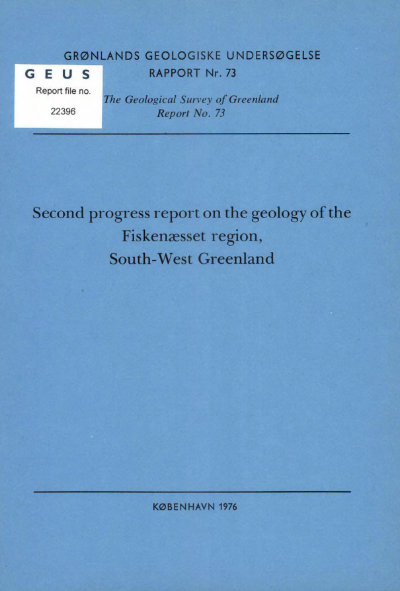Details and significance of pre-Ketilidian dolerite dykes in an area north-east of Bjørnesund, near Fiskenæsset, West Greenland
DOI:
https://doi.org/10.34194/rapggu.v73.7428Abstract
Three sets of dolerite dykes cut all pre-Ketilidian structures in an area north-east of Bjørnesund, where they are intimately associated with transcurrent faults. The earliest dykes trend approximately north-south, are followed by an east-north-east trending set, which in tum are cut by the youngest and most abundant set, trending east-south-east. The east-north-east set may be subdivided into subordinate north-east, and dominant east-north-east trending swarms. Similar field relations have been recorded by Chadwick (1969), Dawes (1970), Jensen (1966), Rivalenti & Sighinolfi (1971), and by many others in unpublished GGU reports. Recent mineralogical and geochemical work by Rivalenti & Sighinolfi concerns -similar dykes in the Frederikshåb area to the south. Within the area south and east of Fiskenæsset, the field relations and petrological characteristics of the dykes are relatively uniform, according to information fumished by colleagues working in adjacent areas.
Downloads
Published
Issue
Section
License
This article is distributed under a CC-BY 4.0 licence, permitting free redistribution and reproduction for any purpose, even commercial, provided proper citation of the original work. Author(s) retain copyright over the article contents.


